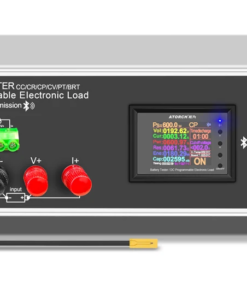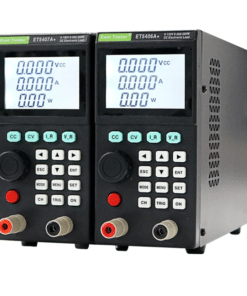Tuyệt vời! Để tôi chuyển sang tiếng Anh nhé.
English Translation:
Electronic Load Tester
An electronic load tester is a testing device designed to consume electric current and absorb power from a power source. It acts like an electrical resistance but can be adjusted and simulated more complex loads.
Why do we need an electronic load tester?
- Testing power sources: Electronic load testers help determine if a power source meets the requirements for current, voltage, and power.
- Testing electrical devices: Devices such as DC-DC converters, chargers, batteries, and solar panels can be tested for performance under various load conditions.
- Fault detection: Electronic load testers help detect potential faults in electrical devices before they cause serious problems.
Structure and operation
A basic electronic load tester consists of:
- Electronic circuits: Control the output current and voltage.
- Cooling fans: Dissipate heat when operating at high power.
- Display: Shows parameters such as voltage, current, and power.
- Communication ports: Connect to a computer for control and data acquisition.
An electronic load tester works by converting electrical energy into thermal energy. This heat is dissipated through heat sinks or cooling fans.
Main operating modes
- Constant current mode: Maintains a constant current through the load, regardless of voltage changes.
- Constant voltage mode: Maintains a constant voltage across the load, regardless of current changes.
- Constant power mode: Maintains a constant power consumption through the load.
- Constant resistance mode: Simulates a purely resistive load.
Applications
- Manufacturing: Testing the quality of power supplies, chargers, batteries, and other electronic devices.
- Research and development: Developing and testing new electrical devices.
- Repair: Identifying and troubleshooting faults in electrical devices.
Important technical parameters
- Voltage range: The range of input voltages that the load can handle.
- Current range: The maximum current that the load can supply.
- Power: The maximum power that the load can consume.
- Accuracy: The accuracy of voltage, current, and power measurements.
- Response speed: The response time of the load when changing parameters.
Note: When using an electronic load tester, it is important to follow the manufacturer’s instructions to ensure safety and efficiency.
Would you like to know more about any specific aspect of electronic load testers? For example, how to choose the right load tester for your needs, or how to use a load tester to test a particular device.
Electronic Load tester
ATORCH DLB-600W Device Battery Tester (Electronic Load Tester)
Electronic Load tester


